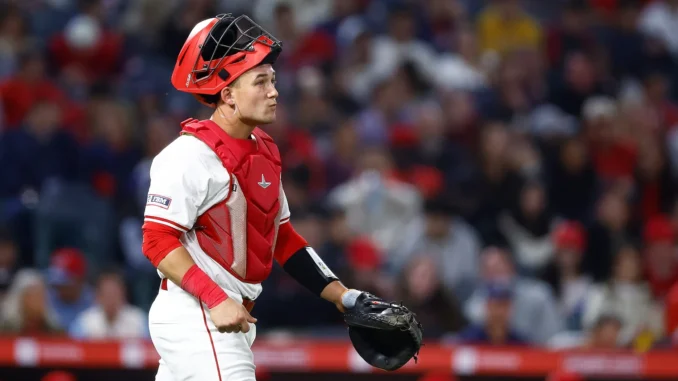
Cubs working to improve at catcher, trade for Matt Thaiss
Given the nature of the Cubs‘ roster construction, any significant upgrade to the offense is almost certainly going to require trading from the 26-man roster. With probably just one exception, every offensive position around the diamond is locked.
This means that the clearest path to being better than the 83-win teams the Cubs have fielded for the past two seasons is through improving their pitching and getting more from their catchers. They took steps forward on both fronts on Wednesday, trading with Cleveland for reliever Eli Morgan and with the Angels for catcher Matt Thaiss.
The latter of the two, Thaiss, isn’t the kind of big-name move Cubs fans are clamoring for, but he should help solidify things behind the plate. On the whole, Cubs catchers ranked 29th in baseball last season in wins above replacement, according to Fangraphs, which was just above the White Sox. They one of just three teams with a negative fWAR at catcher in 2024.

Much of that had to do with the difference a year made for Yan Gomes. After enjoying a .723 OPS season from Gomes in 2023, the production at catcher fell off of the table for the Cubs. He posted a .421 OPS in 34 games last season before the Cubs released him on June 25. From there, Christian Bethancourt and Tomás Nido served as stopgaps.
Thaiss will most certainly serve as Miguel Amaya‘s backup. The 29-year-old, 2016 first-round draft pick has played in 245 games across parts of six seasons for the Angels, batting .208 with 23 doubles, 22 home runs and 79 RBI. Amaya, 25, is positioned to be the Cubs’ catcher of the future. He took a significant step forward in 2024, appearing in 117 games while batting .232 with 13 doubles and 47 RBI.
Encouragingly, Amaya posted strong numbers in the second half of last season; he batted .271 while significantly cutting his strikeout rate from 21.5% in the first half to 11.4% in the second. Amaya’s hard contact rate also jumped in the second half, which lead to a jump in slugging percentage from .288 to .444.
A carryover of this kind of production into 2025 would mean Amaya is the easy choice to be the starting catcher. But more so than any other position on the field, a team’s second backstop needs to be dependable. They are in the lineup more often than utility infielders or fourth outfielders, and the Cubs’ lack of offense from their catchers played a role in the general offensive woes of 2024.
Thaiss is not going to put up eye-popping numbers at the plate, but he should be sufficient as a backup catcher. He hits righties fairly well and is decent behind the plate defensively. He also comes cheap; they sent cash to the Angels in exchange for Thaiss, and he is arbitration eligible and is projected to make a little over $1 million in ’25. There’s a small chance the Cubs non-tender him on Friday and sign him to a minor league deal instead in order to save some money, but that’s not terribly likely. If the Cubs did go that route, it would free up a spot on the 40-man roster for a different catcher to complement Amaya.
Again, this is not a deal that makes a monumental difference for the Cubs next season, but there is value in making even a small upgrade at a position that was a significant hole in the lineup in 2024.
In order to make room for Thaiss, the Cubs designated relief pitcher Trey Wingenter for assignment. The Cubs claimed Wingenter on waivers from the Red Sox on August 2, and he pitched in six games for them. The Cubs 40-man roster currently stands at 40 players, so any further deals are going to include additional corresponding moves.


Leave a Reply